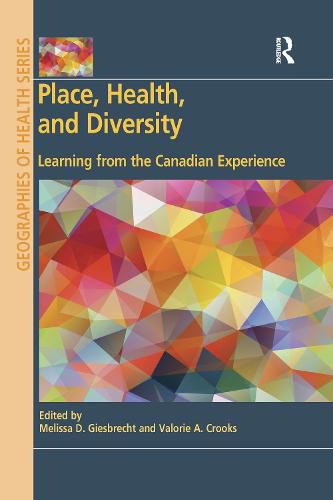Readings Newsletter
Become a Readings Member to make your shopping experience even easier.
Sign in or sign up for free!
You’re not far away from qualifying for FREE standard shipping within Australia
You’ve qualified for FREE standard shipping within Australia
The cart is loading…






Although health equity and diversity-focussed research has begun to gain momentum, there is still a paucity of research from health geographers that explicitly explores how geographic factors, such as place, space, scale, community, and location, inform multiple axes of difference. Such axes can include residential location, age, sex, gender, race/ethnicity, culture, religion, socio-economic status, marital status, sexual orientation, education level, and immigration status. Specifically focussing on Canada’s rapidly changing society, which is becoming increasingly pluralized and diverse, this book examines the place-health-diversity intersection in this national context. Health geographers are well positioned to offer a valuable contribution to diversity-focussed research because place is inextricably linked to differential experiences of health. For example, access to health care and health promoting services and resources is largely influenced by where one is physically and socially situated within the web of diversity. Furthermore, applying geographic concepts like place, in both the physical and social sense, allows researchers to explore multiple axes of difference simultaneously. Such geographic perspectives, as presented in this book, offer new insights into what makes diverse people, in diverse places, with access to diverse resources (un)healthy in different ways in Canada and beyond.
$9.00 standard shipping within Australia
FREE standard shipping within Australia for orders over $100.00
Express & International shipping calculated at checkout
Although health equity and diversity-focussed research has begun to gain momentum, there is still a paucity of research from health geographers that explicitly explores how geographic factors, such as place, space, scale, community, and location, inform multiple axes of difference. Such axes can include residential location, age, sex, gender, race/ethnicity, culture, religion, socio-economic status, marital status, sexual orientation, education level, and immigration status. Specifically focussing on Canada’s rapidly changing society, which is becoming increasingly pluralized and diverse, this book examines the place-health-diversity intersection in this national context. Health geographers are well positioned to offer a valuable contribution to diversity-focussed research because place is inextricably linked to differential experiences of health. For example, access to health care and health promoting services and resources is largely influenced by where one is physically and socially situated within the web of diversity. Furthermore, applying geographic concepts like place, in both the physical and social sense, allows researchers to explore multiple axes of difference simultaneously. Such geographic perspectives, as presented in this book, offer new insights into what makes diverse people, in diverse places, with access to diverse resources (un)healthy in different ways in Canada and beyond.